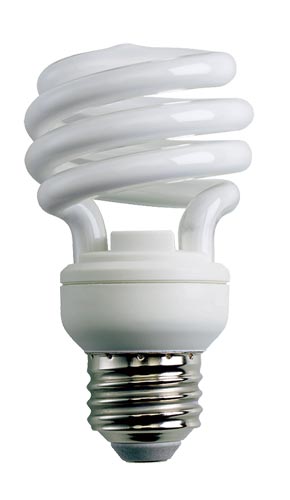1. Halogen Light Bulbs
 Halogen bulbs use a tungsten filament to provide a softer light comparable to that of incandescents. Unlike its outdated counterpart, however, a halogen bulb’s filament is encased in halogen gas, strengthening the filament and allowing it to last longer.
Halogen bulbs use a tungsten filament to provide a softer light comparable to that of incandescents. Unlike its outdated counterpart, however, a halogen bulb’s filament is encased in halogen gas, strengthening the filament and allowing it to last longer. For example, a 43-watt halogen bulb can produce the same amount of light as a 60-watt incandescent bulb, but the 17 watts less of energy and longer-lasting life of a halogen bulb makes it much more efficient.
2. Compact Fluorescent Light Bulbs (CFL)
 Instead of using filaments, these bulbs house argon gas with a small dose of mercury vapor, which interact with the phosphor coating inside each chamber to produce light. Keep in mind that although dimmable versions are available, standard CFLs will not work in dimming applications. The brightness of the light can also be jarring in certain applications, so think about the mood you want to set in each room before choosing to use a CFL.
Instead of using filaments, these bulbs house argon gas with a small dose of mercury vapor, which interact with the phosphor coating inside each chamber to produce light. Keep in mind that although dimmable versions are available, standard CFLs will not work in dimming applications. The brightness of the light can also be jarring in certain applications, so think about the mood you want to set in each room before choosing to use a CFL. 3. Light-Emitting Diode (LED)
 A LED gives off light as electricity passes between a diode comprising an N-type semiconductor and a P-type semiconductor; this current releases photons, a basic unit of light.
A LED gives off light as electricity passes between a diode comprising an N-type semiconductor and a P-type semiconductor; this current releases photons, a basic unit of light. Such a setup does not produce heat, so no electricity is wasted on generating unnecessary energy. LEDs are most commonly used in display lighting, with a few specialty and regular bulb options.











